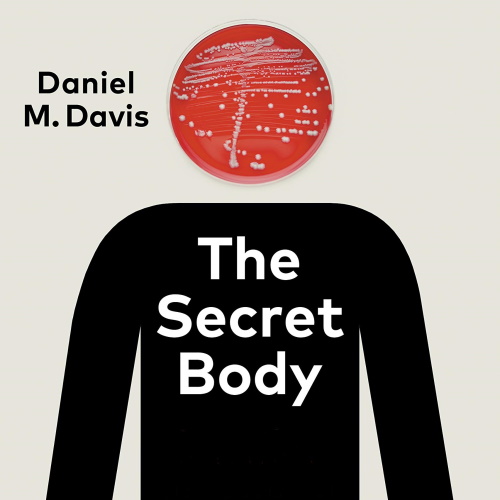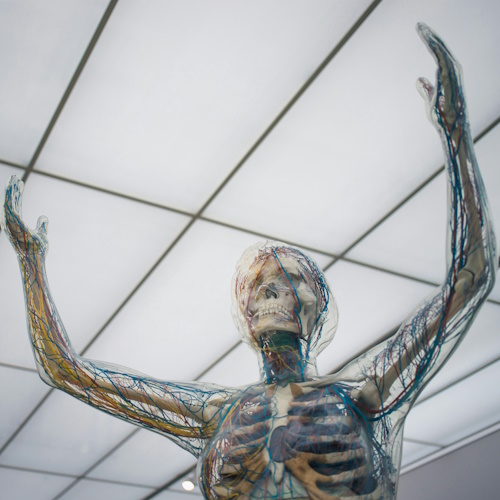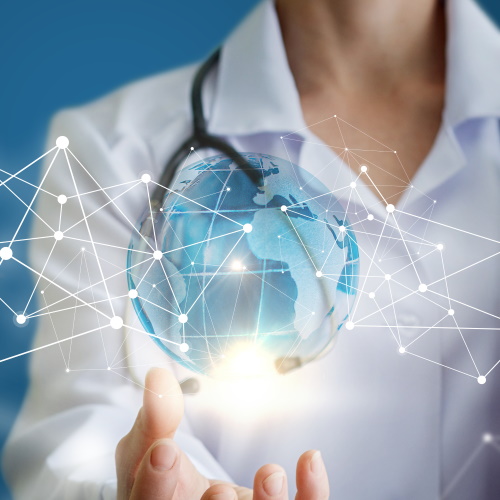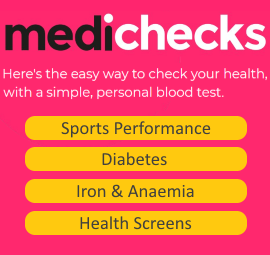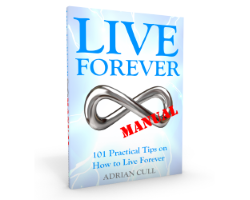The Secret Body: The Life-changing New Science of Human Biology
Book about human biology and the scientific breakthroughs written by Daniel M. Davis
Welcome to a revolution in the science of human health…
This book takes us to the frontier of medical research and reveals stunning recent advances that are changing our understanding of how human body works, how we combat and prevent disease and how we understand what it means to be human.
We see how super-resolution nano-scopes are revealing hitherto hidden operations within our cells and opening up new new ways of manipulating the immune system; how human embryos can now be preserved alive long enough to see how genetic abnormalities can be corrected during the early stages of foetal development; how light is being used to excite pathways in the brain allowing us to understand and manipulate thoughts and feelings; how our rapidly increasing understanding of the microbiome is radically changing every aspect of human biology…
Book Highlights
If you want to have your mind blown away by the complexity of the body, without being too blinded by the science, this is an informative and inspiring read. As a teaser, here are 82 key points from The Secret Body.
- Nothing affects us as deeply or as directly as new revelations about the human body.
- Today’s microscopes are in fact nano-scopes, capable of revealing the human body down to a few billionths of a metre.
- Human Cell Atlas project will identify and classify all 37 trillion cells of the human body.
- An electron microscope requires its specimen to be bathed in chemicals and then placed in a vacuum chamber.
- Super-resolution images obtained in my lab have led to a new idea for treating patients with a rare genetic disease called Chediak-Higashi syndrome.
- Lippincott-Schwartz’s team revealed that the endoplasmic reticulum's supposed sheets of membrane were in fact tubular structures.
- Cells send out small bags of genetic material and proteins as a means of communication with other cells.
- Micro-vesicles, form like buds at a cell’s surface, while another type, exosomes, are assembled inside the cell.
- Vesicles in breast milk might aid the development of a baby’s gut and immune system.
- The contents of a person’s vesicles isolated from a blood sample might be used to indicate the state of a person’s health.
- Cells in a four-cell mouse embryo are different from each other.
- It’s surprising and disheartening that it took thirty-two years for a Nobel Prize to be awarded for the development of IVF.
- There’s so much that can be learnt from watching embryos develop.
- Synthetic or artificial embryos are essentially clumps of stem cells treated so that they develop basic structures of actual embryos, without there ever being the slightest chance of their becoming a body.
- A needle can be used under a microscope to insert a single sperm directly into an egg cell.
- There are over 400 conditions which can be tested for with pre-implantation genetic diagnosis (PGD) in the UK.
- In 2002, a lesbian deaf couple chose a sperm donor with five generations of deafness in his family, effectively choosing to have a deaf baby deliberately.
- New science is opening up an unprecedented number of options for how we conceive and for the fate of our children.
- Microbes use the CRISPR system to attack invading viruses by tagging viral genes for destruction by enzymes which naturally occur in bacteria.
- Leonard and Leonore Herzenberg developed the flow cytometer that sorts and counts different types of cells as well as the fluorescence-activated cell sorter, or FACS.
- Unravelling the complexity of the immune system– or any part of the human body– required understanding the diverse characteristics and functions of its component cells.
- What each cell does in the body depends on the proteins the cell has.
- Antibodies are soluble protein molecules naturally secreted by some of the body’s immune cells to stick to and neutralise infectious bacteria, viruses or other dangers.
- As each B cell is randomly created in the bone marrow, it is tested to see if the antibodies it produces happen to stick to anything that naturally occurs in the body: if it does, it is killed off.
- Our immune system can respond to germs which haven’t been encountered before, including germs which have never even existed in the universe before.
- Flow cytometry can also sorts cells in a quantitative way, so that cells marked with a low level of one antibody and an especially high level of another, can also be isolated.
- A deficiency in T cell numbers is central to why people with AIDS commonly suffer from other infections.
- A person’s tumour is not one but a million different diseases, on account of every tumour cell being subtly different.
- The average body contains something like 37 trillion cells.
- Variants of Natural Killer cells in blood could be organised into eight categories.
- With mass cytometry, as many as one hundred different characteristics about individual cells can be measured.
- Single-cell RNA sequencing– can measure the extent to which each cell is using each of the 20,000 human genes it has.
- Cells with different profiles of gene activity might be different kinds of cell, or they could be the same cell in a different state or situation.
- Our understanding of the body’s cells is being transformed by this new, piercing combination of biology and computer science.
- Human Cell Atlas project will profile 100 million cells in the first instance, from different systems and organs, from different people across the globe.
- In April 2003, a finished version of the human genome sequence was announced by the Human Genome Project.
- The protein molecules which accumulate in synapses can each be isolated and examined at the scale of individual atoms.
- A human brain is made up of 86 billion neurons, connected by around 100 trillion synapses,
- There are well over a hundred different types of neurotransmitter, and even more variation in the receptors which detect them.
- The big idea of Brainbow is to reveal all the neurons in the brain by colouring all of them in, each with a different colour.
- A map that shows which neurons are connected to which other neurons is called the connectome.
- A one-year-old child has a brain with about twice as many synapses as an adult.
- A complete wiring diagram of the human brain needs about as much data as all the digital content held in the world today.
- Optogenetics could switch on a specific type of neuron, in one region of the brain, at any given moment.
- Feng Zhang was able to control the movement of a living mouse by remote control.
- In rats, optogenetics could be used to alter brain activity to stop cocaine addiction.
- The human microbiome includes around 10,000 different species of bacteria, some of which are not known to exist anywhere else on Earth.
- The gut provides a home for bacteria in return for their help in digesting food and producing nutrients.
- When germ-free mice were deliberately exposed to bacteria, they began to put on weight. It’s not that they started eating more– in fact, they ate a little less– they just got fatter.
- Microbes from obese mice equip the animal with an ability to harvest more energy from food.
- Glycaemic index uses sugar as the benchmark with a score of 100.
- Glycaemic load multiplies the glycaemic index of food by its total carbohydrate content.
- Skin interstitial fluid (located just under the top layer of skin) is a rich source of molecules that can indicate a person’s state of health, e.g. its glucose levels mirror that of blood.
- The glycaemic index variation from one person to the next was enormous.
- A good diet favours a microbiome composition which correlates with protection against type 2 diabetes.
- Variations in the human microbiome have been associated with diseases as diverse as autism, asthma, multiple sclerosis, cancer and inflammatory bowel disease.
- Immune cells have protrusions which pierce through the layer of epithelial cells lining the intestine and directly contact bacteria living in and on the mucus.
- C. diff. is naturally present in some people’s gut.
- As long ago as the fourth century, the Chinese medical doctor Ge Hong used stool from a healthy person to treat severe diarrhoea.
- Hundreds of clinical trials are under way to test whether or not faecal transplantation can help treat infections, autoimmune diseases, psychiatric conditions and more.
- Already, there are a few faeces banks around the world, including OpenBiome and Donor Faeces Bank.
- With such variability in the human microbiome, we don’t really know what a ‘healthy’ one is.
- There are all sorts of examples of germs manipulating their host’s behaviour to their advantage.
- There’s a new word for supplements containing living bacteria purported to have mental health benefits: psychobiotics.
- There are twenty amino acids, but we still don’t know how many kinds of protein they make in the human body.
- Prion proteins are abundant in the human body, and that wrongly shaped prion proteins cause problems by clumping in the brain.
- Genes are made of DNA, a chemical chain with four building blocks: adenine, thymine, guanine and cytosine.
- In 1986, Leroy Hood's team announced the world’s first automated gene sequencer.
- In 2020, regions of junk DNA or ‘dark’ genome were found to encode for hundreds of small proteins which we barely understand anything about.
- Actionable outcomes will increase in sophistication as more and more data is integrated in a person’s data cloud.
- Yet to discover genetic variations which have a big effect on intelligence.
- There are many people who have smoked all their lives and have not suffered from lung cancer.
- Disease-causing mutations in BRCA1 or BRCA2 occur in about 1 in 400 people.
- Around ten letters in the string of three billion are altered whenever a cell divides.
- Each person’s cancer contained four or five ‘driver mutations’
- Other ideas for monitoring our health and detecting disease have been proposed, such as analysis of our breath or the sweat from the palms of our hands.
- An ever-increasing amount of personal biologic information presenting us with any number of difficult decisions.
- A holy grail of science and medicine is to stop disease. Especially to stop it before it even begins.
- We are drowning in data which says that every one of us is sub-optimal. Or that every one of us is special.
- Progress in human biology is accelerating at an unprecedented rate.
- The deeper we study the human body, the more we find ourselves not to be so precisely defined.
- We must not be so dazzled that we miss seeing the problems in global access to healthcare.
Visit website: https://www.penguin.co.uk/books/111/1117386/the-secret-body/9781847925695.html
Details last updated 04-Jul-2021
